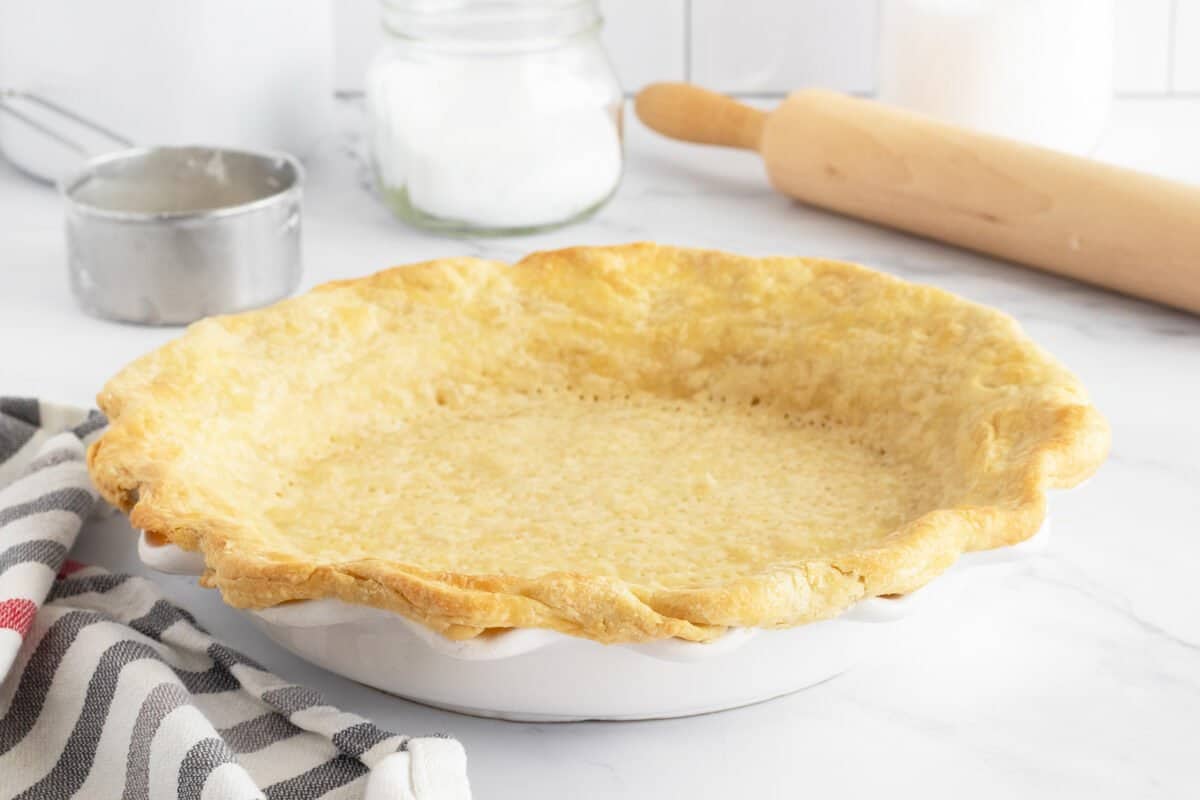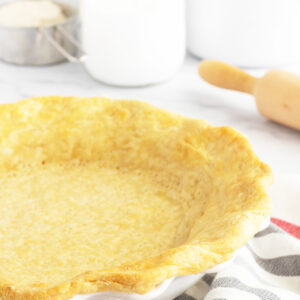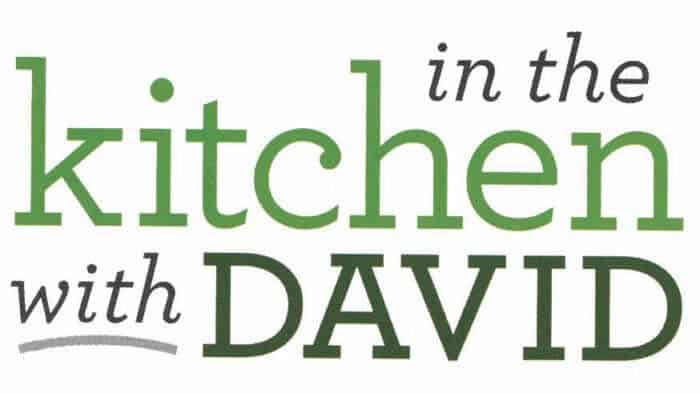Pie crusts are always available from supermarkets and are a great way to make a pie quickly. However, like most things, it can taste way better when made from home.
Why not use this recipe to make your very own Impossible Saskatoon Pie? Or learn how to make The Best Pie Crust Recipe instead, which works perfectly with this Sugar Cream Pie!

Betty Crocker Pie Crust Recipe
Pie crusts are one of those things that most people think of as being way too complicated or tricky to make at home, especially when there are always loads of pie crusts of all types available pre-made.
However, making a single pie crust for a pie, is so incredibly easy to do at home. The only thing that you need to keep in mind is the temperature of every ingredient – if you let your water or your shortening warm up too much while working it, you will end up with a pasty, dripping dough that won’t work for anything.

Betty Crocker Pie Crust Ingredients
Make sure you look at the recipe card at the very bottom for the exact amounts so that you know exactly what to buy for this recipe.
• All-purpose flour
• Salt
• Shortening
• Ice water

How To Make Betty Crocker Pie Crust
- In medium bowl, mix flour and salt.
- Cut in shortening, using pastry blender or fork, until mixture forms coarse crumbs the size of small peas.
- Sprinkle with water, 1 tablespoon at a time, tossing with fork until all flour is moistened and pastry almost leaves side of bowl (1 to 2 teaspoons more water can be added if necessary).
- Gather the pastry into a ball. Shape into flattened round on lightly floured surface. Wrap flattened round in plastic wrap and refrigerate 45 minutes or until dough is firm and cold, yet pliable.
- This allows the shortening to become slightly firm, which helps make the baked pastry flaky. If it is refrigerated longer, let the pastry soften slightly at room temperature before rolling it out.
- Using a floured rolling pin, roll pastry on lightly floured surface (or pastry board with floured pastry cloth) into a circle 2 inches larger than upside-down 9-inch glass pie plate. Fold pastry into fourths and place in pie plate or roll pastry loosely around rolling pin and transfer to pie plate.
- Unfold or unroll pastry and ease into pie plate. pressing firmly against bottom and side and being careful not to stretch pastry, which will cause it to shrink when baked. You can also lightly poke the bottom of the pastry in the pie plate with a fork. For pie, trim overhanging edge of pastry 1 inch from rim of pie plate.

Baking the Betty Crocker Pie Crust
• Preheat your oven to 400°F. Cut a circle of parchment paper that is large enough to fit into a 9-inch pie plate and come up the edges as well.
• Line the pie crust with the parchment circle. Gently add pie weights or dried beans into the pan, filling it ½ of the way and up the sides of the pie plate. The weights ensure that the crust holds its shape during baking and doesn’t slump in the pan or bubble up.
•Chill the crust in the fridge for 10 minutes while the oven is heating up.
• Place into the preheated oven. Bake until the edges of the pie are just turning golden brown, not anymore.
• Remove the crust from the oven and remove the pie weights and the paper.
• If you’ll be baking the crust once it’s filled (chess pie, etc.) return the pie to the oven and bake the crust until the bottom is just beginning to color, around another 6 to 8 minutes.
• If you’re making a cream pie or refrigerated pie, you must bake it until the entire crust is golden brown, about 15 minutes longer. Remove and cool completely, then use in your recipe as directed.

How To Easily Work The Butter Into The Flour
Crumbling butter into flour and other dry ingredients is a common step in many baking recipes, yet it is surprisingly more complex than the simple instruction might make you think.
The trouble is that the butter never seems to want actually to mix with the flour, and if you don’t persevere, you will probably think that it will just never work.
However, the trick is to be constantly pressing, crumbling, and forcing the butter into the flour. You are trying to submerge and coat the flour particles in butter utterly, and that takes a good amount of force to really work.
If you are having trouble or don’t feel like getting butter and flour underneath your fingernails, you can use a pastry cutter or even just two forks with the tines pressed into each other. Either tool will allow you to put sufficient force into the butter and get it all crumbled together.
It might look like nothing is happening, but keep working at it, and it will eventually start to crumble together and form into a ball.

What Do If Everything Starts To Heat Up
The way to make a really cohesive, tightly bound ball of pie crust pastry dough is to keep all of your ingredients cold. If the water or the butter starts to warm up, then little bits of it will start to melt and mess with the overall texture of the dough.
To avoid the butter melting, make sure everything is as cold as you can get it. This means having your ice water actually be sitting in a bowl of ice cubes straight from the freezer.
Your butter should come straight from the fridge, and even you bowl and utensils should be as cold as possible. If you have the space, you can put the bowl and everything into the fridge itself and let it chill there for half an hour.
As long as everything is nice and cold, then you shouldn’t have a problem.
Looking for more delicious Pie recipes? Try these out:
Happy Baking
Love,
Karlynn

Pin this recipe to your DESSERTS AND PIES RECIPES Board and Remember to FOLLOW ME ON PINTEREST!


Betty Crocker Pie Crust
Ingredients
- 1 cup plus 1 tablespoon all-purpose flour
- 1/2 teaspoon salt
- 1/3 cup shortening (Cold)
- 3 to 5 tablespoons ice-cold water
Instructions
- In medium bowl, mix flour and salt.
- Cut in shortening, using pastry blender or fork, until mixture forms coarse crumbs the size of small peas.
- Sprinkle with water, 1 tablespoon at a time, tossing with fork until all flour is moistened and pastry almost leaves side of bowl (1 to 2 teaspoons more water can be added if necessary).
- Gather the pastry into a ball. Shape into flattened round on lightly floured surface. Wrap flattened round in plastic wrap and refrigerate 45 minutes or until dough is firm and cold, yet pliable.
- This allows the shortening to become slightly firm, which helps make the baked pastry flaky. If it is refrigerated longer, let the pastry soften slightly at room temperature before rolling it out.
- Using a floured rolling pin, roll pastry on lightly floured surface (or pastry board with floured pastry cloth) into a circle 2 inches larger than upside-down 9-inch glass pie plate. Fold pastry into fourths and place in pie plate or roll pastry loosely around rolling pin and transfer to pie plate.
- Unfold or unroll pastry and ease into pie plate. pressing firmly against bottom and side and being careful not to stretch pastry, which will cause it to shrink when baked. You can also lightly poke the bottom of the pastry in the pie plate with a fork. For pie, trim overhanging edge of pastry 1 inch from rim of pie plate.
Baking the Pie Crust
- Preheat your oven to 400°F. Cut a circle of parchment paper that is large enough to fit into a 9-inch pie plate and come up the edges as well.
- Line the pie crust with the parchment circle. Gently add pie weights or dried beans into the pan, filling it ½ of the way and up the sides of the pie plate. The weights ensure that the crust holds its shape during baking and doesn't slump in the pan or bubble up.
- Chill the crust in the fridge for 10 minutes while the oven is heating up.
- Place into the preheated oven. Bake until the edges of the pie are just turning golden brown, not anymore.
- Remove the crust from the oven and remove the pie weights and the paper.
- If you'll be baking the crust once it's filled (chess pie, etc.) return the pie to the oven and bake the crust until the bottom is just beginning to color, around another 6 to 8 minutes.
- If you're making a cream pie or refrigerated pie, you must bake it until the entire crust is golden brown, about 15 minutes longer. Remove and cool completely, then use in your recipe as directed.














Timothy Jordan says
Hello from Florida, I am a senior man trying to bake pie crust for the first time and I wanted to start simple with a Betty Crocker pie mix. All I can get here is the 11oz double mix. When I read your recipe it says to use 1 cup plus TBL spoon AP flour, what happened to the BC crust mix?? Or is that what you are inferring to? Am I cutting shortening into the pie mix? Sorry I’m not understanding, please help. Thank you, Tim